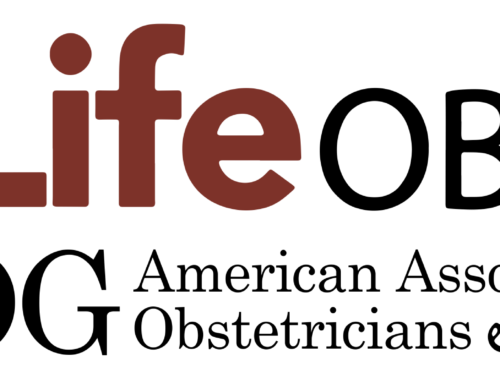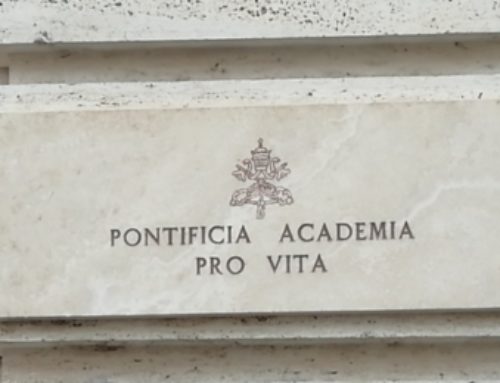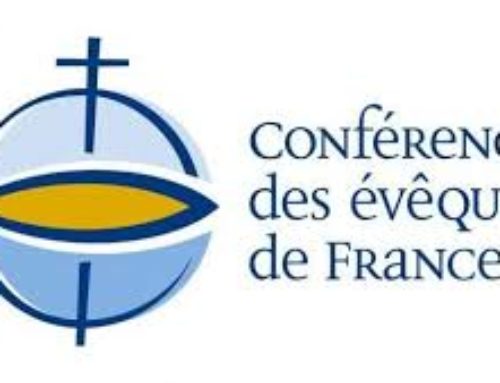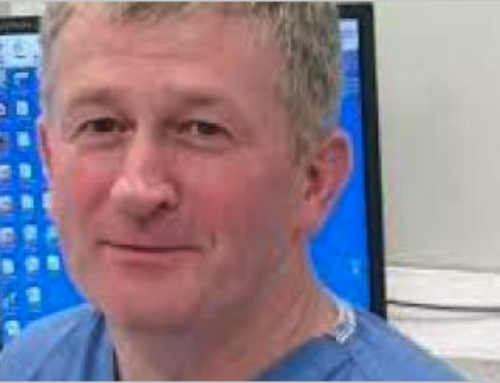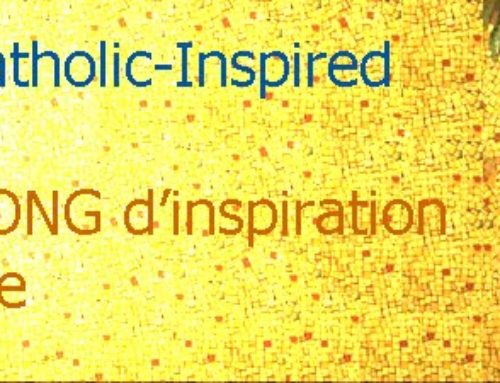What Catholic Social Teaching Says About the Status of Embryos
June 20, 2024
Part One: The Effects of Reproductive Technologies and Research on the Human Embryo
By Angela Lanfranchi MD, FACS
According to Catholic Social Teaching, we are called to revere all human life in all its stages and forms including the youngest embryo.
This teaching has deep roots in our Catholic Faith. It is based upon the Old and the New Testaments, the Catechism of the Catholic Church and is supported by the teachings of the United States Conference of Catholic Bishops (USCCB) which follows the tradition of Vatican and Episcopal documents and uses Papal encyclicals from Pope Leo in 1891 until the present day.
Concerning the Seven Themes of Catholic Social Justice, the first theme is Life and the Dignity of the Human Person. The USCCB states that “Catholic social teaching is based on and inseparable from our understanding of human life and human dignity. Every human being is created in the image of God and redeemed by Jesus Christ and therefore is invaluable and worthy of respect as a member of the human family. Every person, from the moment of conception to natural death, has inherent dignity and a right to life consistent with that dignity. Human dignity comes from God, not from any human quality or accomplishment.” (emphasis added.)
God formed us in the womb and from conception knows our souls, offering each individual soul eternal life with Him (Jeremiah 1:5). Embryos are at risk from multiple threats such as abortifacient drugs, cloning, experimentation and reproductive technologies in our modern world and require protection.

6-7 week human embryo Photo Credit: Lunar Caustic
The Wonder of the Human Embryo
When sperm penetrate ova and conception occurs, a new unique human life begins. A single cell zygote is formed at conception. It is the first form of a unique individual with a soul called an embryo.
In a normal pregnancy, this single cell embryo doubles into two cells, then four, then eight until it is 16 cells by day four after conception, termed a morula, meaning mulberry in Latin. The morula continues to cleave more rapidly continuing its way down the fallopian tube toward the uterus forming the blastocyst by day five. The round blastocyst now has over 100 cells of inner and outer cells arranged in a shape similar to an Easter basket with a handle when bisected. These cells will form the placenta and body of a new human life. By day 8-9 the blastocyst has implanted in the uterine wall if there is a normal pregnancy. Yet even before implantation, the continually growing embryo in the fallopian tube is able to make hCG, human Chorionic Gonadotrophin. HCG is the glycoprotein detected in pregnancy tests to determine if a woman is pregnant. HCG, signals the ovary to produce more estrogen and progesterone which differentiates the uterine lining to allow implantation to occur.
A colleague who taught biological sciences as a college professor used to call hCG “baby’s first cry”. Breast feeding women will often have “let down,” ie the oxytocin mediated secretion of breast milk, in response to their baby’s cry. Oxytocin is sometimes referred to as the “love hormone” that bonds humans to one another; mother to baby and spouses to one another.
Early embryos in the fallopian tube have no blood supply yet need provision of nutrients to grow. The embryo’s production of hCG causes the production of “uterine or womb milk” to provide sustenance. A nutritious white fluid containing all the nutrients needed for the blastocyst such as amino acids and protein is secreted by the lining of the womb, the endometrium. The secretion changes as the embryo starts growing further after implantation to contain other nutrients such as fat. Other molecules, in addition to hCG, provide early communication between the embryo and mother’s uterine wall to ready it for implantation such as interleukin 1 beta, insulin-like growth factor (IGF), and platelet activation factor. This supports nascent life until at 11 weeks the fetal-placental unit is able to sustain the pregnancy through its own production of the necessary pregnancy hormones and not rely on its mother’s ovarian production alone. At the end of eight weeks development, the embryo is termed a fetus, a little one in Latin.
Mothers also benefit from the production of hCG. HCG causes the mother to produce inhibin, which suppresses the formation of cancers from forming in her body, such as breast cancer. HCG has been used as treatment to cause regression of breast cancers in women. Another hormone produced by the fetus and placenta is hPL (human Placental Lactogen). This hormone rises after about 20 weeks and plateaus at about 32 weeks until the end of pregnancy. HPL fully matures the mother’s breast tissue so that most of her breast tissue becomes cancer resistant, lowering her risk of breast cancer for life. Those facts support the observations that any birth after 32 weeks results in ultimately lower breast cancer risk and premature delivery before 32 weeks doubles breast cancer risk. Also, induced abortions of a hormonally normal pregnancy before 32 weeks have been shown to increase breast cancer risk. Pregnancy is beneficial to both mother and child. How fearfully and wonderfully made are we!
The Effects of Reproductive Technologies and Research on the Human Embryo

Human embryo created through IVF Photo credit: K. Hardy, Welcome Collection
The rise in estrogen seen in early viable pregnancies due to the embryo secretion of hCG was posited by Stewart et al. in 1992. In their paper, they were able to show elevated levels of estrogen and progesterone in conceptive cycles. Earlier in 1976, Grimes et al had shown that levels of beta- hCG correlated with the outcome of pregnancies with lower levels found in pregnancies complicated by ectopic pregnancies, threatened abortion, or hydatiform mole. Blastocysts grown in culture are shown to produce hCG. In embryos prior to the development of the blastocyct stage, mRNA is found that codes for hCG. Today, hCG has been added to some in vitro fertilization (IVF) protocols to enhance probability of successful embryo transfer from the storage freezer or petri dish to the womb ending in a live birth with varying success. HCG is not made by the pregnant mother. As demonstrated by measurable hCG, clearly women are pregnant before the blastocyst implants, although recent publications and text books today teach that pregnancy does not start until the blastocyst implants into the mother’s womb.
IVF and most assisted reproductive technologies have rightfully been banned by the Church. It has also resulted in embryos purposefully experimented upon or eliminated if ultimately “unwanted” by their biological parents or surrogates. They might have been found to be genetically imperfect, or not the desired sex, or suffered unintended death from mishaps that might occur in the course of examination and storage.
Induced abortions, also known as “selective reductions,” of pregnancy can occur after transfer of multiple embryos to better assure success of the IVF procedure. An embryo may wait in a limbo deep freeze until allowed to continue to grow in-utero. Their parents may also give them up for adoption as a “Snowflake Embryo Adoption” or disagree about their fate resulting in protracted litigation.
Embryos are also the victims of experimentation for embryonic stem cell research which has proven over the decades to be unsuccessful in providing useful cures to diseases as promised and hoped for compared to the therapeutic advances in adult stem cell research. For example, adult stem cells have been used for heart muscle repair after the ischemic event of a myocardial infarction or after neurologic injury to the spinal cord with great success.
Cloning embryos only to dispose of them after they served their purpose as a source of embryonic cells for scientific experiments is clearly unjust. Using any human person as a source of “body parts” dehumanizes them. Known to happen in the field of organ transplantation and condemned by the principles of Catholic Social Teaching, are the” harvesting” of human organs when there is no valid consent by the donor who is under duress or the donation results in death of the donor. Taking cells from human embryos who may be injured or die in the process is also contrary to Catholic Social Teaching despite a parent’s willing consent.
* This is part one of a two-part series. Part two will run in July.
Dr. Angela Lanfranchi is a breast cancer surgeon and is the president of the Breast Cancer Prevention Institute, which she co-founded. She is also a Clinical Assistant Professor of Surgery at the Rutgers-RWJ Medical School in Piscataway, New Jersey. Dr. Lanfranchi is an active member of the Catholic Medical Association, serving as the New Jersey State Director and is a member of the only guild in the state, the South Jersey Catholic Medical Guild of the Diocese of Camden. She is also a member of CMA’s Catholic Social Teaching on Justice in Medicine Committee.


